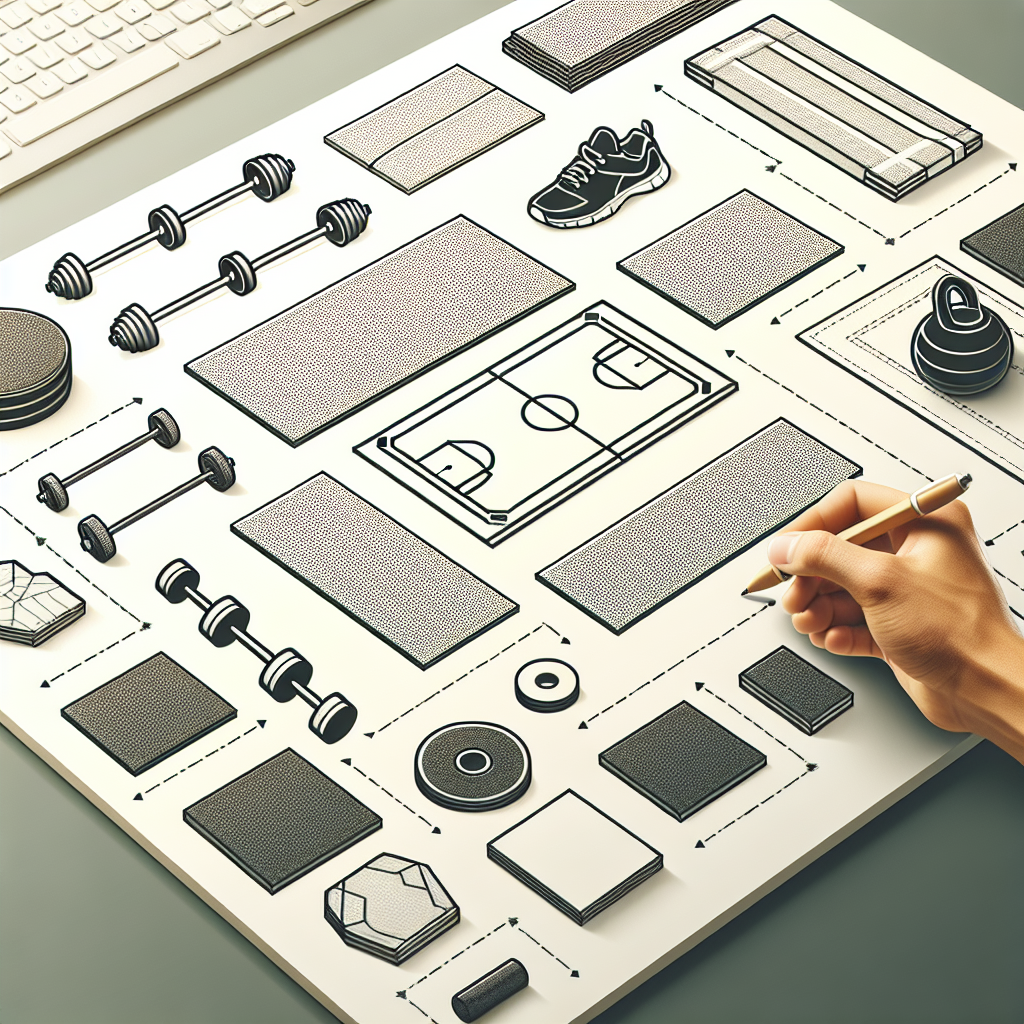
Choosing the Right Flooring for Your Home Gym
Share
Choosing the Right Flooring for Your Home Gym
Creating a home gym is an investment in your health and wellness. However, one crucial detail many homeowners overlook is the flooring. The right home gym flooring options can protect your floor, absorb shock, minimize injuries, reduce noise, and enhance your workout experience. In this guide, we’ll help you understand your choices and make the ideal selection for your workout space, no matter how big or small.
Why Flooring Matters in a Home Gym
Gym flooring isn’t just about aesthetics. It can make or break the functionality and durability of your home gym. Flooring designed for fitness absorbs impact, prevents your equipment from sliding, and protects your body from injuries associated with repeated impact or missteps. Beyond that, the right floor can create the foundation for a cleaner, quieter, and longer-lasting home gym.
Top Home Gym Flooring Options
While there are countless flooring materials out there, only a few truly hold up to the demands of a home gym. Here are the top home gym flooring options to consider:
- Rubber Flooring: The most popular choice for home gyms. Rubber mats, tiles, and rolls are durable, shock-absorbent, and protect both your floor and equipment. Available in different thicknesses, they are easy to install and maintain.
- Foam Tiles: Lightweight, budget-friendly, and easy to assemble, foam tiles offer comfort for bodyweight exercises and yoga. Best for low-impact workouts, they can indent with heavy weights but work well for versatile movement.
- PVC Vinyl Flooring: Known for its water resistance and ease of cleaning, vinyl is a good-looking, cost-effective option. It handles moderate weight but may not provide as much shock absorption as rubber.
- Carpet Tiles: If your gym will double as a family room, carpet tiles can offer a softer, multi-use flooring choice. Be sure to choose low-pile options and consider moisture resistance.
- Horse Stall Mats: Industrial-grade rubber mats found in barns, these offer excellent toughness and shock protection for heavy lifting areas, often at a lower cost than gym-specific rubber tiles.
- Cork Flooring: While less common, cork is an eco-friendly option with moderate shock absorption, ideal for lighter workouts where comfort is a premium.
Factors to Consider When Selecting Home Gym Flooring
With so many home gym flooring options available, your decision will depend on several key factors:
- Type of Workouts: Heavy weightlifting requires thick, impact-absorbing flooring such as rubber. Dance, yoga, and Pilates are best on softer, cushioned surfaces like foam or cork.
- Equipment Used: Cardio machines and weight benches need stable, non-slip support. For a comprehensive workout station, durability is essential.
- Room Location: Basement gyms might need moisture-resistant flooring, while upstairs spaces benefit from lighter, sound-dampening materials.
- Installation and Maintenance: Some options, like interlocking tiles, are easy to install and adjust. Others, such as rolled rubber or vinyl, may require professional installation.
- Budget: Rubber and PVC can be pricier but offer unmatched durability, while foam and carpet tiles are more affordable for lighter use.
Popular Home Gym Flooring Products
Below are a few standout product categories for home gym flooring options:
- Interlocking Rubber Tiles: Widely available and easy to customize for any room size.
- Large Rubber Mats: Perfect for placing under weight racks or high-impact zones.
- Vinyl Gym Rolls: Good for covering larger areas with a seamless look, especially for multipurpose rooms.
- Foam Mats: Available in thicknesses from half an inch to 1.5 inches, ideal for functional fitness and stretching.
How to Install Home Gym Flooring
Many options are DIY-friendly, especially interlocking tiles and foams mats:
- Start with a clean, dry, even surface.
- Lay out your mats or tiles to fit the room dimensions, trimming edges as necessary.
- For tiles, connect them like puzzle pieces; for rolls, tape or glue the seams for stability.
- Allow 24 hours for materials to acclimate and settle before using heavy equipment.
If your gym has unique requirements or irregular shapes, consider hiring professionals for custom-cut installations.
Combining Flooring with the Best Home Gym Equipment
No gym is complete without the right equipment, and the flooring you select should complement the main workout gear you plan to use. One product that stands out for both functionality and adaptability is the Multifunction Home Gym Weight Training Workout Station White. This versatile station offers strength training, bodyweight workouts, and more, all of which require safe, sturdy flooring underneath. Pairing robust rubber tiles or mats with an all-in-one system like this significantly enhances your workout safety, stability, and comfort.
Tips for Maintaining Your Gym Flooring
- Vacuum or sweep regularly to prevent dust and debris buildup.
- Wipe spills promptly, especially on foam, wood, or carpet tiles.
- Check flooring for signs of wear or indentation and replace damaged tiles as needed.
- Use furniture sliders or mats under equipment to reduce pressure and scuffs.
- Deep clean high-traffic areas with mild soap and water monthly.
Final Thoughts: The Right Foundation for Your Fitness Journey
The best home gym flooring options blend safety, comfort, and durability, creating a space that motivates and supports your every workout. From shock-absorbing rubber to multi-purpose foam and stylish vinyl, the variety available allows you to find a solution tailored to your fitness needs and personal style. Don’t forget, pairing your new floors with a comprehensive workout system such as the Multifunction Home Gym Weight Training Workout Station White ensures a dynamic, resilient gym environment you’ll love for years to come.
Meta description: Discover the best home gym flooring options for every workout style. Learn how to choose, install, and maintain perfect gym flooring for your fitness goals.
